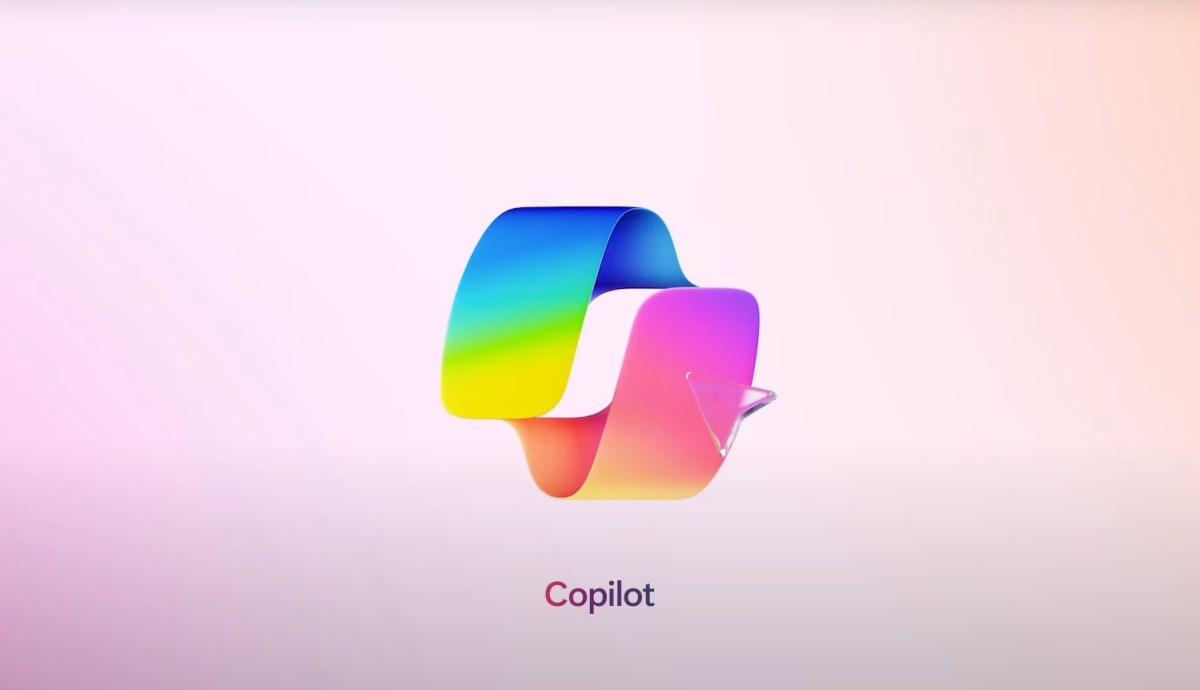Copilot is Microsoft’s take on productivity-boosting generative AI, and it continues to grow and expand with Microsoft’s AI ambitions. Today, there are around a dozen Copilot-branded products powering various capabilities in Microsoft software and services, like summarizations in Microsoft Outlook and transcriptions in Microsoft Teams.
That’s in addition to Microsoft-owned GitHub Copilot tool for generating code, and the Copilot that lives on Windows and the web, which serves more as a general-purpose assistant à la OpenAI’s ChatGPT than a point solution.
In this post, we explain the many Microsoft Copilots available and what they do, and we highlight the key differences between each.
What is Microsoft Copilot?
Microsoft Copilot, previously known as Bing Chat, is built into Microsoft’s search engine, Bing, as well as Windows 10, Windows 11 and the Microsoft Edge sidebar. (Newer PCs even have a dedicated keyboard key for launching Copilot.) There’s also stand-alone Copilot apps for Android and iOS and an in-app Telegram room.
Powered by fine-tuned versions of OpenAI’s models (OpenAI and Microsoft have a close working relationship), Copilot can perform a range of tasks described in natural language, like writing poems and essays, as well as translating text into other languages and summarizing sources from around the web (albeit imperfectly).
Copilot, like ChatGPT and Google’s Gemini, can browse the web (in Copilot’s case, via Bing) for up-to-date information. It sometimes gets things wrong, but for timely queries, access to search results can give Copilot an advantage over offline bots such as Anthropic’s Claude.
Copilot can create images by tapping Image Creator, Microsoft’s image generator built on OpenAI’s DALL-E 3 model. And it can generate songs via an integration with Suno, the AI music-generation platform. Typing something like “Create an image of a zebra” or “Generate a song with a jazz rhythm” in Copilot will pull up the relevant tool.
On the subject of integrations, Copilot supports plug-ins for third-party apps and websites. There’s plug-ins for Instacart (for meal planning and cooking-related questions), Kayak (for trip planning), OpenTable (for restaurant reservations) and Shopify, to name a few examples, with more being added on a semiregular basis.
Which Windows settings can Copilot control?
On Windows 11 (but not necessarily Windows 10), Copilot can control certain settings and functions, acting as a digital concierge of sorts.
With Copilot, either by typing or using Windows 11’s speech recognition functionality, users can perform actions on a PC like turning the battery saver on or off, showing device and system information, launching live captions, displaying the PC’s IP address and emptying the recycle bin.
A toggle in the Copilot experience on Windows 11 switches between “Work” and “Web” mode, with the former bringing Copilot’s Microsoft 365 capabilities in the Windows interface. More on that later.
What is Copilot Pro?
Copilot Pro is Microsoft’s premium Copilot product, priced at $20 per month. It’s similar in some ways to rival generative AI chatbot plans like OpenAI’s ChatGPT Plus and Google’s Google One AI Premium, but not exactly the same.
Copilot Pro customers get priority access to the most capable OpenAI models (e.g., GPT-4o) during peak times. And select features of Copilot can only be accessed with a Pro subscription, such as higher-resolution images from Image Creator.
Copilot Pro also gives users access to generative AI functions across Word, Excel, PowerPoint, Outlook and OneNote. In Word and OneNote, Copilot can write, edit, summarize and generate text. Copilot in Excel and PowerPoint can turn natural language prompts into presentations and visualizations. And in Outlook, Copilot can help draft email responses with toggles for adjusting the length or tone.
For customers with a Microsoft 365 Personal or Family plan, these functions work on the Word, Excel, PowerPoint, Outlook and OneNote desktop apps. Those without are limited to the web versions of these Microsoft 365 apps.
Beyond the Microsoft 365 upgrades, Copilot Pro subscribers get 100 “boosts” per day in Image Creator (versus only 15 per day for free users) to speed up the image-generation process, plus landscape formatting options.
Importantly, Copilot Pro does not come with Copilot in Teams, a Copilot feature in Microsoft Teams that provides real-time summaries and action items while handling tasks like identifying people for follow-ups and creating meeting agendas. Copilot in Teams is exclusive to enterprise Copilot customers, meaning those with an enterprise-class (or equivalent) Microsoft 365 license.
What is Copilot for Microsoft 365?
Separate and distinct from the consumer Copilot SKU is Copilot for Microsoft 365, a suite of generative AI add-ons to Microsoft 365 with an emphasis on business applications.
Copilot for Microsoft 365 is priced at $30 per user per month and available only to customers with a Microsoft 365 E3, E5, Business Standard or Business Premium license. It delivers many of the same capabilities across the Microsoft 365 family of apps as Copilot Pro, but with the addition of “enterprise-grade data protection” and the Semantic Index, a back-end system that creates a map of the data and content in an organization to allow Copilot to deliver more personalized responses.
Microsoft recently launched Microsoft 365 Chat, for example, a Copilot for Microsoft 365 tool that pulls info from content across Microsoft 365 apps (e.g., Word docs, PowerPoint presentations) to answer questions. In Excel, meanwhile, Copilot for Microsoft 365 can format data, create graphs, generate pivot tables and guide users through creating formulas and macros.
There are many, many Copilots besides. Here’s a partial list of them and their “skills”:
- Copilot in Power Pages can generate text, forms, chatbots and web page layouts and can create and edit image and site design themes.
- Copilot for Sales can help write email responses to customers or perform sales-related tasks such as sending summaries of Teams meetings through Outlook.
- Copilot in Microsoft Supply Chain Center can proactively flag issues like weather, financials and geography that might impact supply chain processes.
- Copilot for Service can draft answers to customer queries via chat or email and provide a chat experience for customer service agents that draws from knowledge bases as well as case history.
- Copilot for Azure can suggest configurations for Microsoft Azure-hosted apps and environments and help with troubleshooting by identifying potential issues and solutions.
- Copilot for Security aims to summarize and “make sense” of different forms of cyberthreat intelligence.
- Copilot in Fabric helps explore, integrate, transform, prepare and visualize data.
- Copilot in Intune helps manage security policies and settings and troubleshoot device issues.
- Team Copilot can help manage meeting agendas in Teams and extend to Loop and Planner to create and assign tasks, track deadlines and notify team members when their input’s needed.
Note that some of Microsoft’s Copilots, like Copilot in Business Central, are included in the base software licenses and don’t require paying an additional fee. Others, like Copilot for Sales and Copilot for Service, cost an extra $20 per user per month or $50 per user per month without a Copilot for Microsoft 365 subscription.
Copilot Studio
Copilot Studio is a dashboard that allows customers to give Copilot for Microsoft 365 access to data in their, or a third party’s, customer relationship management software, enterprise resource management systems, and other databases and repositories using prebuilt connectors or connectors they build themselves. Through Copilot Studio, customers can build guardrails for Copilots and create and publish their own custom-tailored “copilots.”
Copilot for Microsoft 365 subscribers can tap Copilot Studio to create their own copilot by describing it in natural language. Copilots can filter to specific datasets for particular teams or users, or connect to an automation, plug-in or third-party service to kick off actions or a workflow.
Copilot Studio is also where customers can craft what Microsoft calls “Copilot agents.” These AI bots leverage memory and knowledge of context to navigate different business workflows, learning from user feedback and asking for help when they encounter situations they don’t know how to handle.
What is GitHub Copilot?
Not to be confused with the other Copilots in Microsoft’s portfolio, GitHub Copilot is a set of tools for generating code and generally supporting programming work. GitHub Copilot can be installed as an extension for IDEs including Visual Studio Code, Visual Studio, Neovim and JetBrains, or used in the cloud with GitHub Codespaces.
The generative AI model underpinning GitHub Copilot has been trained on billions of lines of Python, JavaScript, TypeScript, Ruby, Go and dozens of other programming languages — many of them hosted and available publicly on GitHub. When you’re writing code, GitHub Copilot suggests code as you type; you can cycle through suggestions and accept or reject them.
GitHub Copilot can also translate code into natural language descriptions, and Copilot Extensions allow developers to extend Copilot with third-party skills.
GitHub Copilot is available for free for students and for “verified” open source contributors and educators. For individuals, it’s $10 per month. For business customers, it’s $19 per month per user. And for enterprises, it’s $39 per user per month.
Individual, business and enterprise subscribers get Copilot Chat along with GitHub Copilot, a chatbot-like flow that’s aware of the entire context of the code they’re working on and can answer questions about that code. In addition to answering coding questions, Chat can help developers fix errors and bugs and address security issues through code analysis.
The enterprise and business GitHub Copilot plans include license management, IP indemnity, organization-wide policy management and added privacy features. Enterprise customers have the ability to customize for their codebases and knowledge bases and fine-tune the underlying models, as well as access Copilot through the Microsoft Copilot on the web and use Copilot Chat on GitHub.com.
In April, GitHub launched Copilot Workspace, a sort of take on AI-powered software engineering. Workspace provides a dev environment that taps AI-powered agents to help brainstorm, plan, build, test and run code in natural language.
Issues with Copilot
Owing to the complex and fraught nature of today’s generative AI tech, Microsoft’s Copilots have their issues.
The models occasionally make mistakes when summarizing or answering questions because of their tendency to hallucinate, including while summarizing meetings. The Wall Street Journal cited an instance where, for one early adopter using Copilot for Team meetings, Copilot invented attendees and implied that calls were about subjects that were never actually discussed.
As for GitHub Copilot, GitHub itself warns that it can produce insecure coding patterns, bugs and references to outdated APIs, or idioms reflecting the less-than-perfect code in its training data. The code Copilot suggests might not always compile, run or even make sense because it doesn’t actually test the suggestions.
Security and privacy concerns loom large over Copilot as well, but perhaps the elephant in the room is the unresolved fair-use question.
Like most generative AI models, the models powering Microsoft’s Copilots were trained on public data, some of which is copyrighted or under a restrictive license. Microsoft — among others — argues that the fair-use doctrine shields it from copyright claims. But that hasn’t stopped data owners from filing class action lawsuits against the company, GitHub, OpenAI and many more over what owners allege are clear licensing and IP violations.
Microsoft offers policies to protect certain customers from courtroom battles arising from fair use challenges — at least in narrow circumstances. That doesn’t resolve the ethical quandary of training models on data without permission, however, which may be more than some customers can swallow.










